At the heart of our planet’s life lies a world of awe-inspiring biodiversity and ecological complexity: the rainforest. These lush and vibrant ecosystems are a treasure trove of life, boasting an incredible variety of species uniquely adapted to each layer of their environment.
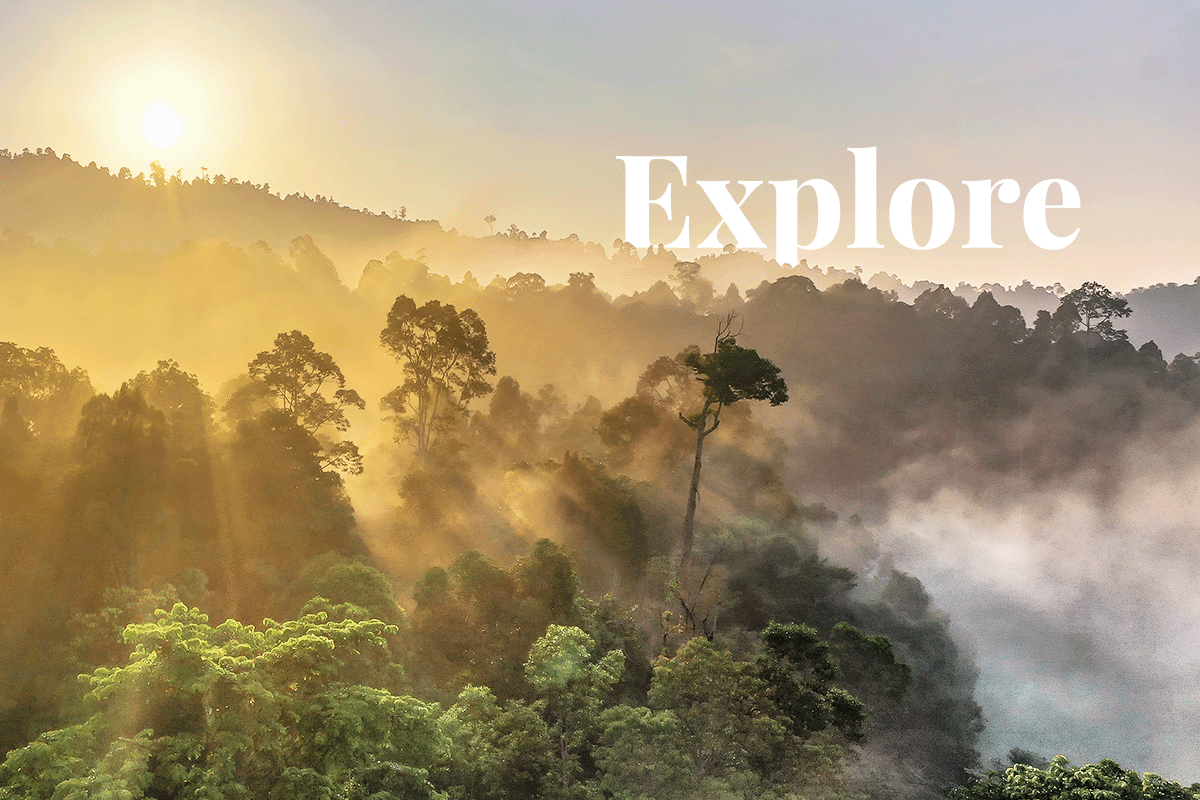 Sunrise view of Borneo Rainforest.
Sunrise view of Borneo Rainforest.
In this journey through the four layers of the rainforest, we'll explore the secrets of its vertical stratification and delve into the remarkable diversity that defines these extraordinary habitats.
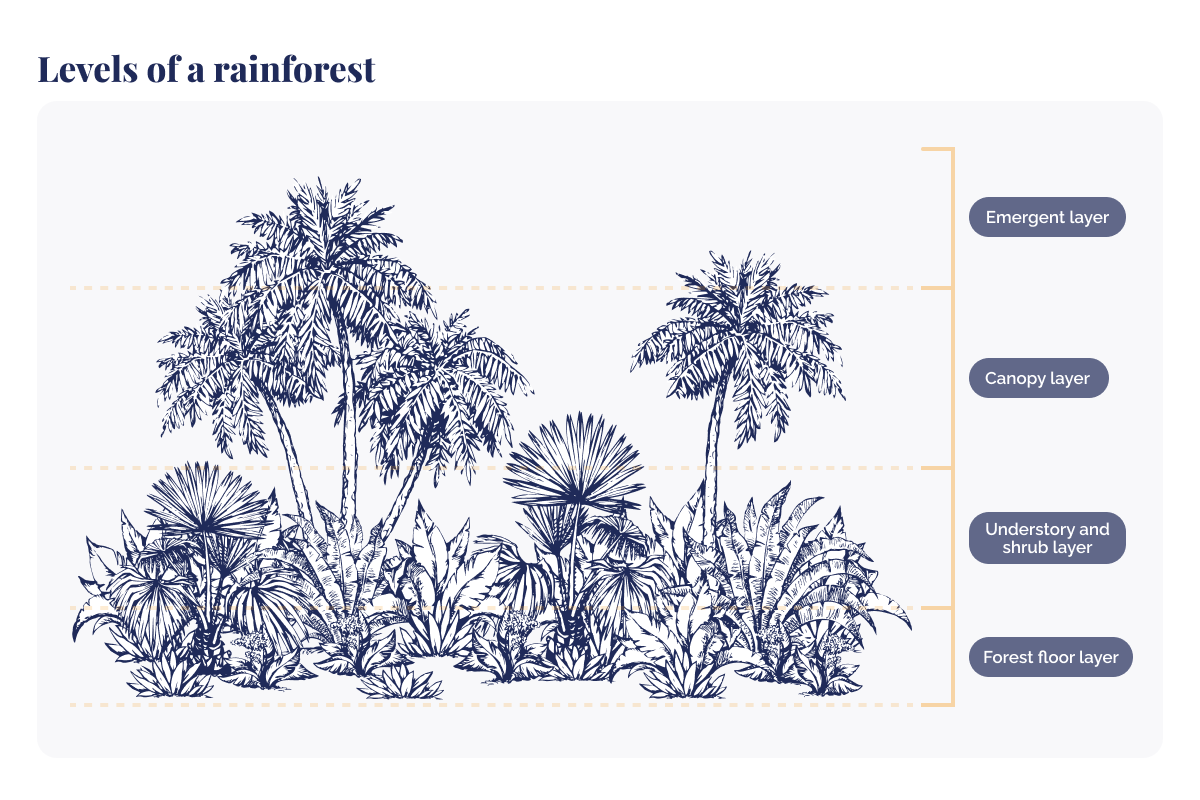 Illustration of levels of a rainforest.
Illustration of levels of a rainforest.
1. Emergent layer: the realm of giants
At the highest reaches of a rainforest, a truly breathtaking spectacle unfolds. Here, in the emergent layer, nature unfurls its grandeur with towering trees that rise above the forest's tapestry. These giants stand as nature's skyscrapers, defying gravity and reaching for the heavens. Some of these colossal trees ascend to heights of 200 feet or more, forming an intricate and awe-inspiring forest crown.
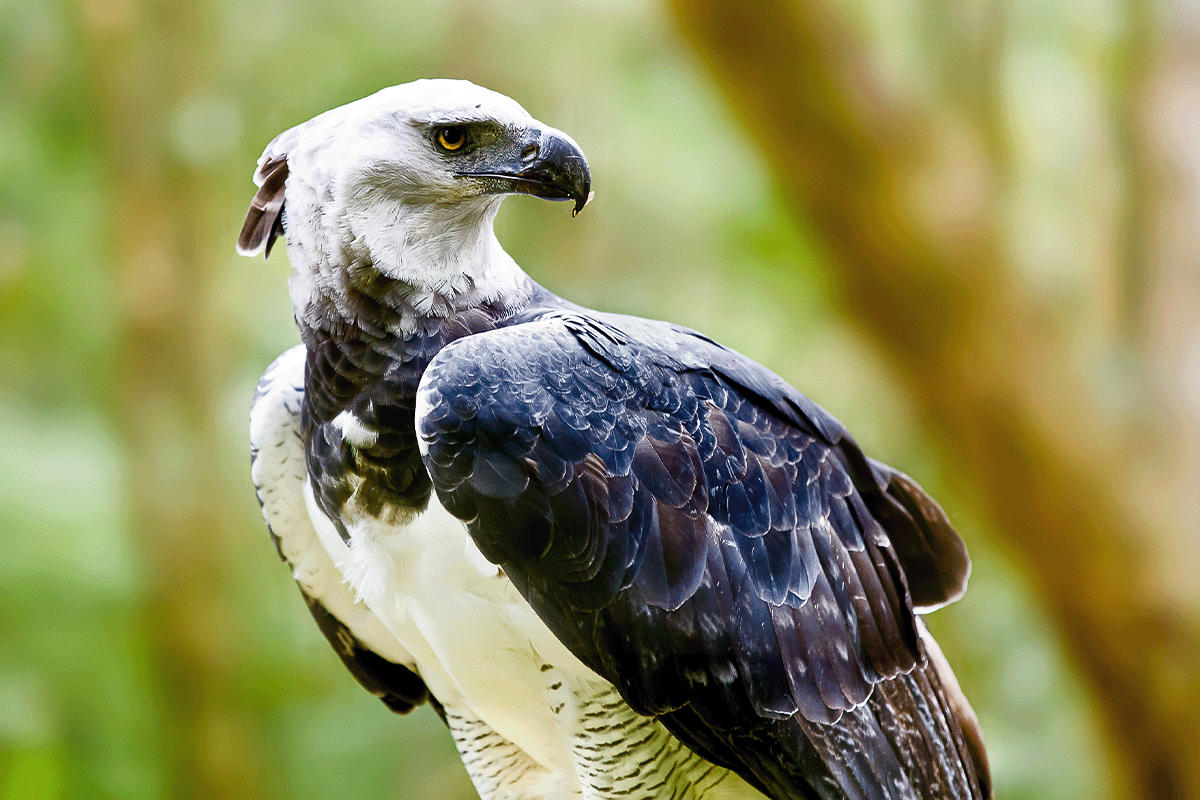 A harpy eagle sitting in a tree in a rainforest, Brazil.
A harpy eagle sitting in a tree in a rainforest, Brazil.
Amidst this elevated sanctuary, life teems in unexpected ways. Perched high above, eagles and hawks scan the horizon, their keen eyes surveying the landscape for prey. The harpy eagle, a formidable predator found in the emergent layer, boasts a wingspan that can reach up to 7 feet (2.1 metres). This massive bird of prey reigns as one of the largest and most powerful eagles on the planet, further showcasing the astonishing diversity of life in the rainforest's upper echelons. Monkeys, such as Howler monkeys, are equally at home in the treetops. They swing with an infectious playfulness, traversing the natural bridges formed by intertwining branches. It's here, at the crown of the rainforest, that nature's marvels unfold in breathtaking harmony.
Read more: 10 Vital ecosystem services: sustaining life on Earth
2. Canopy layer: a biodiversity hotspot
The canopy, often referred to as the ‘green ocean’, is where the rainforest truly thrives. This dense layer, formed by an intricate network of interconnected treetops, is an epicentre of biodiversity. Teeming with life, the canopy houses an astounding variety of arboreal animals and plants. Vibrant birds like toucans, manakins, barbets, and macaw parrots dart through the foliage, their colourful beaks and feathers a testament to the vibrancy of their habitat. Secretive mammals, including tree-dwelling jaguars, pangolins, colugos (also known as flying lemurs), kinkajous, and tarsiers, navigate this bustling realm with grace, adapting to the aerial lifestyle.
Read more: Reforestation: 10 amazing benefits of planting trees
Orchids, bromeliads, epiphytic ferns, and a plethora of other flora embellish this expansive green tapestry, each species uniquely adapted to life perched on branches. These plants, often called ‘air plants’, seize every opportunity to catch rays of sunlight that manage to pierce through the canopy. The result is a mesmerising dance of life and colour, a living mosaic that fills the air with the sounds of chirps, calls, and rustling leaves. Indeed, the biodiversity here is so abundant that scientists are still discovering new species within this remarkable layer, illustrating the hidden wonders of the rainforest's canopy.
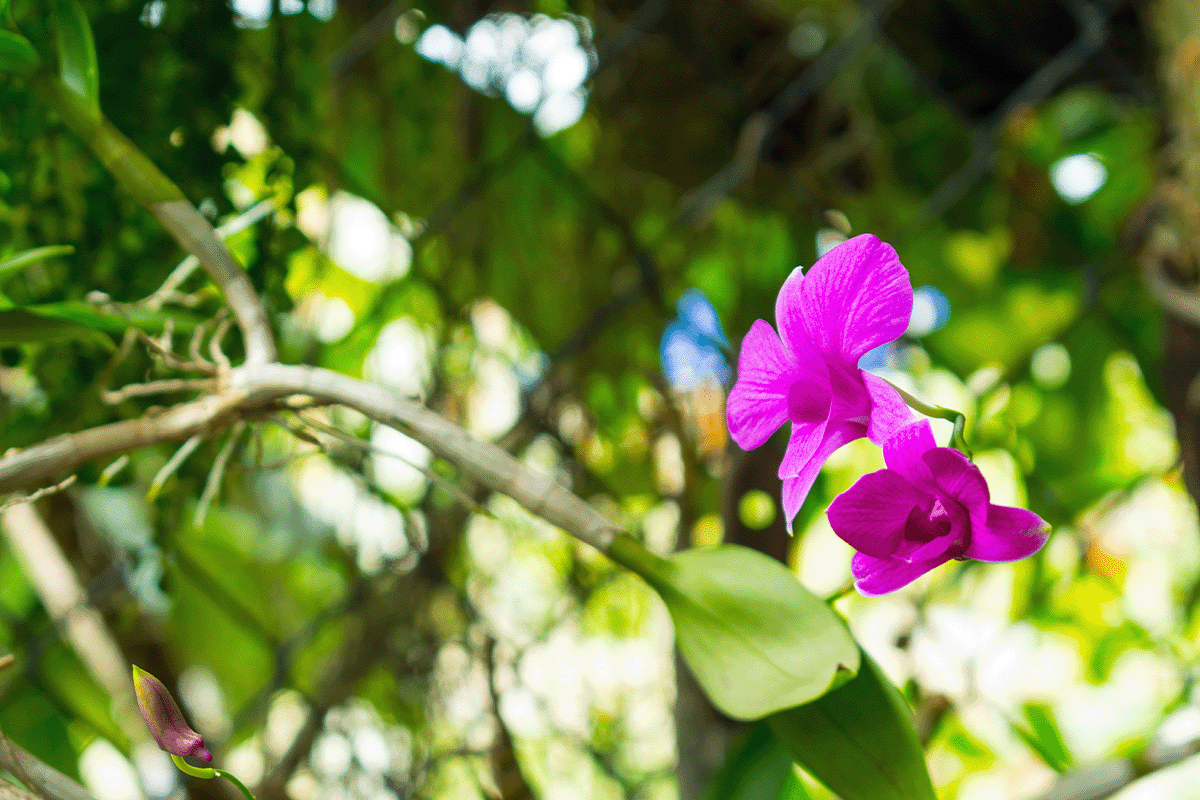 Orchid flowers growing around trees in a tropical rainforest.
Orchid flowers growing around trees in a tropical rainforest.
3. Understory and shrub layer: dimly lit territories
Beneath the canopy, another world comes to life in the understory and shrub layer. Here, subdued light filters through, creating a dreamlike ambience. Shorter trees and shrubs thrive, adapting to this shadowy realm. This layer provides essential shelter for a multitude of ground-dwelling creatures, from anteaters that probe the earth for insects to curious insects that navigate the intricate vegetation. Amidst the dappled light, life pulsates in an ever-constant ballet of survival and adaptation.
Read more: Nature’s symphony: 15 Interconnected wonders of biodiversity
It's a realm where life meets shade, and survival demands creative adaptations to navigate this environment. Delicate ferns unfurl their fronds, capturing fleeting rays of sunlight. Colourful frogs with striking patterns find refuge in damp recesses, their vibrant hues contrasting with the muted surroundings. Animals that inhabit this layer include small mammals like rabbits, squirrels, and chipmunks, as well as reptiles such as lizards and snakes. Many bird species, like thrushes, warblers, and wrens, make their homes here, utilising the understory's dense vegetation for nesting and foraging. Insects, including butterflies, beetles, and ants, are abundant and play essential roles in pollination and nutrient cycling. Additionally, some larger mammals, like deer, forage in this layer, finding food and shelter among the shrubs and lower vegetation.
The biodiversity here is a testament to nature's resilience, where countless species have embraced the challenges of the dimly lit understory. This layer is renowned for being a sanctuary for rare orchids and other plants that have evolved to thrive in the understory's unique microclimate.
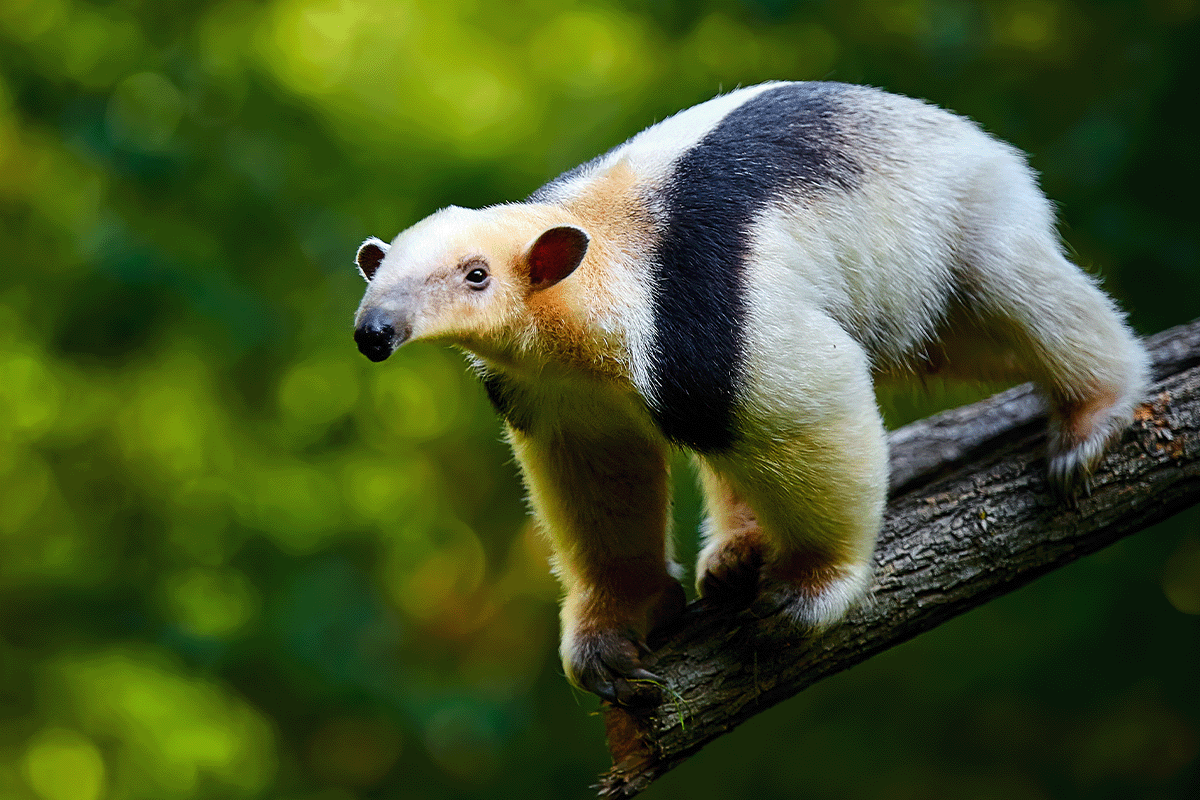 The southern tamandua, also called the collared anteater or lesser anteater, in Brazilian rainforest.
The southern tamandua, also called the collared anteater or lesser anteater, in Brazilian rainforest.
4. Forest floor layer: life's nutrient-rich carpet
Venturing closer to the ground, we enter the forest floor layer, an often overlooked but vital piece of the rainforest. Here, the forest's grand narrative continues as decomposing organic matter forms a rich, nutrient-laden carpet. This hidden world is a bustling hub of life, where organisms from minuscule microbes to bustling beetles engage in a cycle of decomposition and regeneration.
Read more: Why are tropical rainforests important?
In this fertile soil, an array of life flourishes. Fungi, like earthstars, stinkhorns, or slime molds, are often unseen but vital players in this process and form partnerships with trees, exchanging nutrients in a fascinating underground dialogue. In the dappled shadows, small mammals such as pacas, antechinus, voles, and shrews scuttle and burrow, carving out cosy homes amidst the leaf litter. It's a captivating sight where leafcutter ants laboriously transport sections of leaves to their subterranean nests, where the leaves will nourish edible fungus—demonstrating the ecosystem's remarkable efficiency.
The forest floor is a realm where fallen leaves, decaying branches, and organic debris are not waste, but rather the building blocks of life—feeding the forest. It is the very foundation of the rainforest. Amidst the mosaic of colours and textures, biodiversity thrives in the most unexpected places, each organism playing a vital role in sustaining the intricate balance of life that permeates the forest floor.
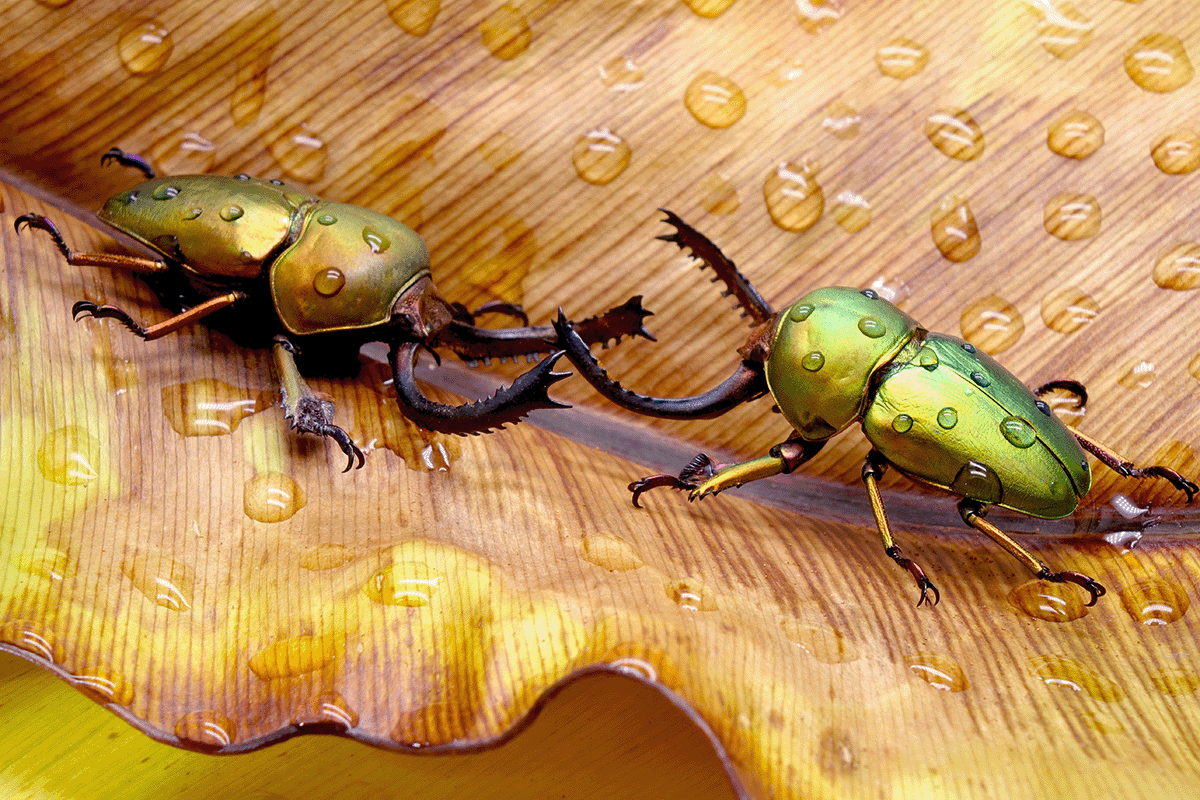 Close up of golden and green metallic sawtooth beetles walking on a leaf in Papua New Guinea National Rainforest.
Close up of golden and green metallic sawtooth beetles walking on a leaf in Papua New Guinea National Rainforest.
Bonus: vines and lianas—nature's network
As an added layer of enchantment, the rainforest is crisscrossed by a web of vines and lianas. These natural climbers bridge gaps between layers, creating ecological highways that connect the forest's inhabitants. Just as they support themselves on other trees, these plants support the interconnectedness of the rainforest, aiding biodiversity and enabling the exchange of resources.
Read more: The roots of a sustainable future: integrating trees into a circular economy
Threats to rainforests and the importance of preserving them
Rainforests are the heart of our planet’s biodiversity. But these intricate layers of life are under siege. The world's rainforests face an array of threats, from rampant global deforestation driven by agriculture and logging to the creeping impacts of climate change.
Annually, we are losing forest areas equal to the size of Portugal—approximately 10 million hectares—most of which are tropical rainforests. Of all the biologically diverse terrain available, tropical rainforests are biologically the richest terrestrial biome on the planet, hosting between 50% and 90% of the world’s species. Tropical deforestation is, therefore, the single largest threat to maintaining the planet’s flora and fauna diversity. It leads to an excessive loss of species distribution, increasing the risk of extinction. The loss of tropical forest habitats equates to a loss of biodiversity of an estimated 50,000 species per year.
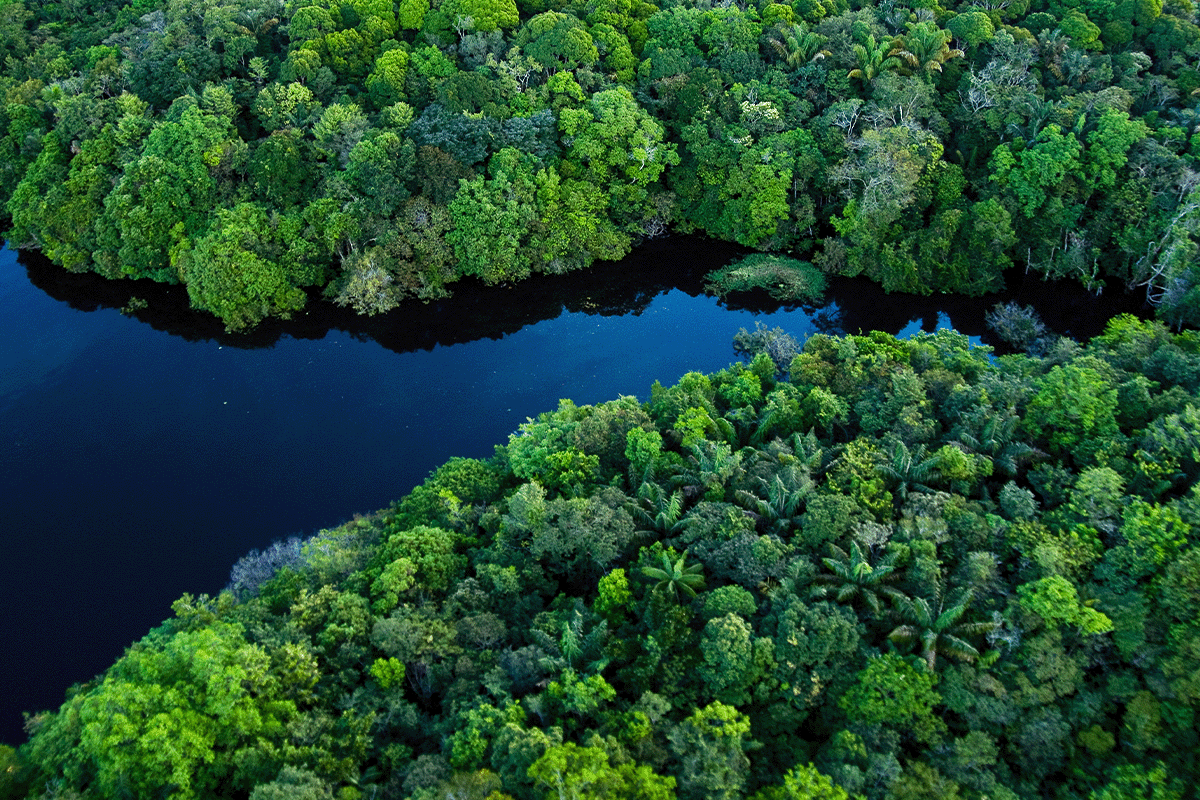 Aerial view of the Amazon Rainforest.
Aerial view of the Amazon Rainforest.
The consequences of losing these ecosystems are therefore profound, jeopardising countless species and disrupting global climate patterns. Rainforests have remarkable carbon-sequestering capabilities and serve as a vital defence against climate change. This capability, together with their vital importance to biodiversity, underscores the urgent and immediate need for their protection.
Read more: Biodiversity credits: an innovative financing mechanism for conservation
DGB Group: supporting the layers of life
In a world where each layer plays a pivotal role in the grand symphony of nature, it's essential that we embrace our responsibility as stewards of rainforests. The harmonious interplay between the four layers of rainforests—emergent trees, dazzling canopies, intricate understories, and nurturing forest floors—embodies the magnificence of life's complexity. As we marvel at the layers of biodiversity that flourish within these ecosystems, let's also recognise the power and responsibility we hold to protect and preserve them.
Initiatives like DGB Group's nature-based projects work to restore and and protect these threatened ecosystems. By supporting our afforestation, reforestation, and land restoration projects, you can become part of a nature-positive movement that nurtures biodiversity, safeguards ecosystems, and secures a flourishing future for generations while benefitting your organisation.
Join DGB in our mission to protect nature







